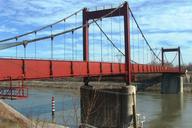Izmit Bay Bridge: Suspension bridge with the world's fourth longest main span
The suspension bridge with the fourth longest main span in the world is currently being erected over the Izmit Bay. A particular challenge is the location. The drawn-out bay is situated in one of the world's most active seismic zones: therefore the bridge is designed to resist earthquakes of magnitude up to 8. For this purpose MAURER designed special expansion joints with fuse box, which in case of earthquake shall accommodate movements of up to +/- 3.8 m, while remaining trafficable after the seismic event.
Media
The Izmit Bay Bridge (Turkish İzmit Körfez Köprüsü) is situated in the East of the Marmara Sea, to the West of Izmit and around 50 km (31 miles) to the Southeast of Istanbul. The bridge forms a part of the expressway Istanbul-Izmir and bridges the bay in direction North-South. This will considerably reduce the commuting time.
The core part of the Izmit Bay Bridge is the 2.7 km long suspension bridge, consisting of three lanes in each direction. The bridge spans the bay 64 m above sea level. Main span is 1,550 m, which will become the fourth longest main span in the world. The approach ramps are 566 m long, in total the bridge has a width of 35.40 m.
Earthquake proof expansion joints
The special challenge is to keep this huge bridge operational in case of earthquake. The Izmit Bay is situated in one of the seismically most active zones in the world. The supporting structure of the bridge consists of concrete and highly resistant steel, the latter in particular also for the both 252 m high pylons and the cables. The pylons are anchored in concrete foundations, which lie on huge gravel beds, on which they can slide in case of earthquake. This isolates the bridge at least partially from the tremendous earthquake energies.
However it is not only about the preservation of the structure. A critical issue in case of earthquake are extreme horizontal displacements: If during an earthquake the bridge superstructure collides with the abutment, it consequently compresses the expansion joint. This may endanger the load carrying capacity of the total structure.
This calls for expansion joints which in case of earthquake facilitate additional closing movements, and thereafter even remain trafficable. For this special case, MAURER has developed expansion joints with an attached fuse box.
Already in service stage, the expansion joints with 28 lamellas accommodate movements of +/- 1,400 mm. In case of a 500 year seismic event they can accommodate +/- 3,770 mm. The 4 m additional displacement is facilitated by a fuse box, which can be considered as a safety valve.
The special feature of a MAURER fuse box is that the expansion joints can even accommodate extreme displacements: When the earthquake causes a closing movement and immediately thereafter an opening movement, the expansion joints can follow these movements and facilitate a trafficability for emergency vehicles. The expansion joint itself is not damaged after activation of the fuse box. The fuse box can be reestablished again simply.
Testing of its functionality
The complete system was tested at ENEA (Agenzia Nazionale per le Nuove Tecnologie, l'Energia e lo Sviluppo Economico Sostenibile) in Casaccia, Italy. For the 500 year earthquake, a horizontal displacement velocity of up to 20 mm/sec was assumed and tested. The tests confirm the functionality of these huge expansion joints.
MAURER designed, produced and tested all four expansion joints:
- Two 28-module expansion joints (Type DS 2800-F2) with 100 mm gap width, each one 25.40 m wide, as well as
- Two 5-module expansion joints (Type DS400-F2) with 80 mm gap width and 30.40 respectively 28.00 m width.
The 5-module expansion joints at the North side were installed in September 2015. They are longer, because the bridge widens there for the approach ramps. The 28-module expansion joints are expected to be installed in March 2016.
Design and construction
The design of the Izmit Bay Bridge can be considered as a deep bow to the revolutionary Severn Bridge in Great Britain, which in 1966 was opened as a first suspension bridge with stay cables. The impressive design of the Izmit Bay Bridge was done by the Danish Architects Dissing+Weitling.
The construction of the bridge started in 2012. In 2017 it shall be opened. It will cost about 800 Mio. €. The main bridge is erected by the Japanese contractor IHI, the Southern approach by the Turkish contractor Nurol, and the Northern approach by the Italian contractor Astaldi. Operator of the bridge is a company named Nömayg, which is a joint venture of the 5 Turkish companies Nurol, Özaltın, Makyol, Yüksel and Gocay.
References
Structure Types
- About this
data sheet - Product-ID
7314 - Published on:
02/02/2016 - Last updated on:
17/03/2022

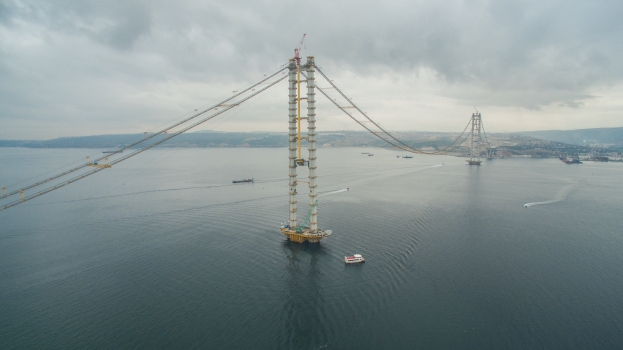

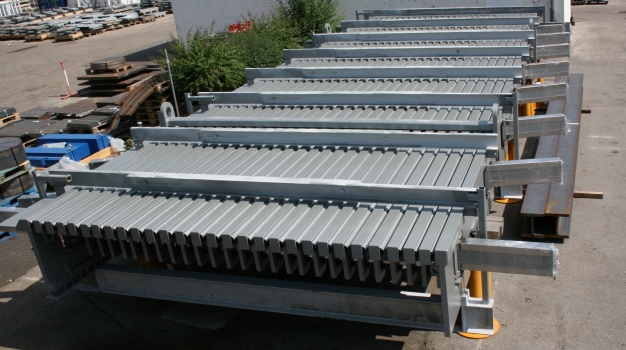
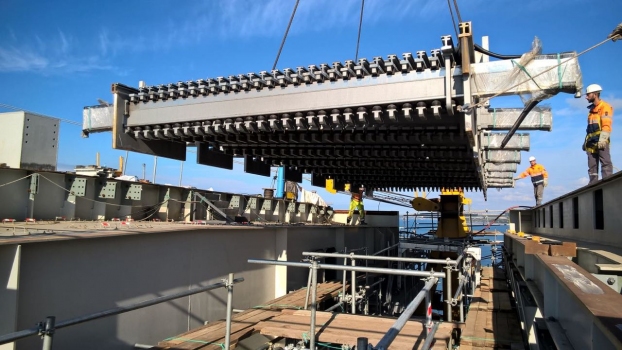
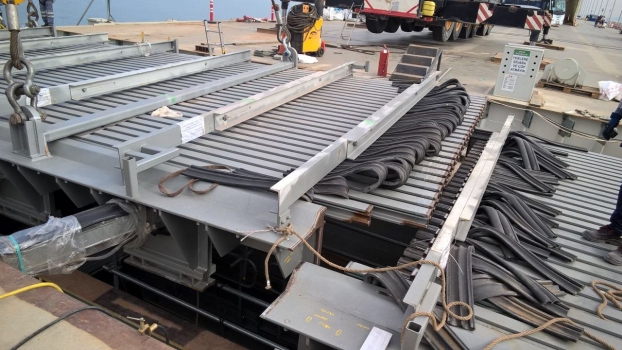
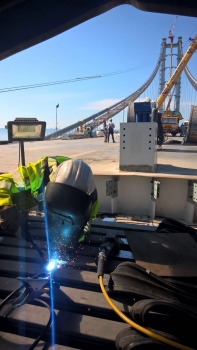
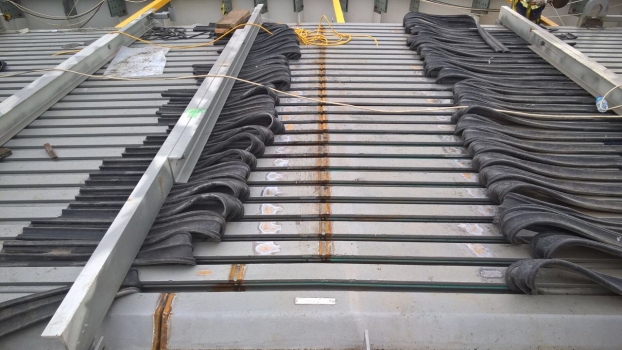
 MAURER SE
MAURER SE 
